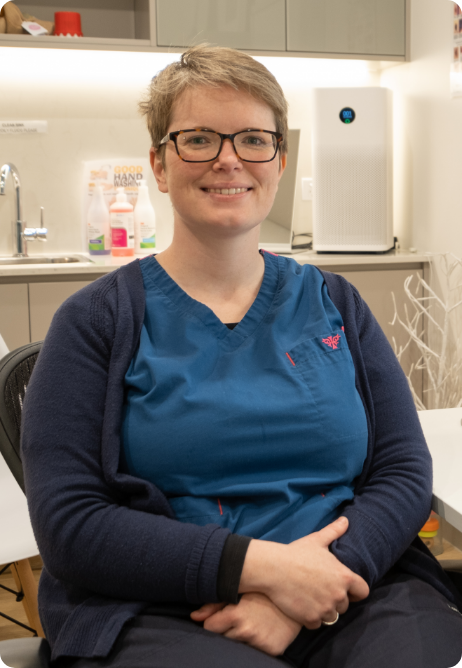Dr Stephanie Andriputri
MBBS; BA; DRANZCOG; DCH; FRACGP
Acute IllnessChild Health ServicesChronic Disease Prevention & ManagementMental HealthReproductive HealthSexual HealthTravel HealthWomen’s HealthWork Health
Fibroids are noncancerous growths or lumps of muscle tissue that form in the walls of the uterus. They can be as small as a pea, as large as a rockmelon, or larger.
We’re not sure why they occur, but we do know that the female hormones oestrogen and progesterone play a big role in their growth stimulation.
Fibroids can occur in women of reproductive age, growing until the onset of menopause. After menopause, they tend to decrease in size and may slowly disappear altogether.
Some things do increase your risk of getting fibroids, while others increase your risk.
| Higher risk | Lower risk |
|---|---|
|
|
Fibroids occur in up to 70% of women by the time they are 50. Many won’t even know they have fibroids because the majority don’t get symptoms at all. Symptoms depend on the size, location and number of fibroids. Symptoms can include
In very rare circumstances a fibroid may become cancerous and is then called a sarcoma.
Fibroids are usually found during a gynaecological examination, pelvic ultrasound or surgery for other conditions.
Fibroids may be found during a hysteroscopy which is an internal examination, usually under general anaesthesia, performed using a hysteroscope (a thin telescope). This is inserted along the vagina into a woman’s uterus to examine the inside cavity.
Fibroids can also be found during a laparoscopy (keyhole surgery). This is an examination, using a thin telescope performed under general anaesthesia, through a small cut in the navel (umbilicus) to look at or operate on the pelvic organs, such as the uterus, ovaries and uterine (fallopian) tubes.
Infertility is not a common problem for women with fibroids, less than three per cent of women may have fertility problems as a result of fibroids.
Sometimes fibroids cause problems in pregnancy or they interfere with labour and delivery. The number and position of the fibroids will determine if there is a problem. Fibroids can increase the risk of:
A pregnancy following surgery to remove fibroids may increase the risk of the scar in the uterus rupturing during the pregnancy.
Most fibroids will not require treatment unless they are causing problems such as:
| Treatment | How it Works |
|---|---|
| GnRH agonist (an artificial hormone used to prevent natural ovulation) | It causes temporary chemical menopause which shrinks the fibroids. |
| Intrauterine device (IUD) | Placed in the uterus, it can reduce heavy periods. |
| Uterine artery embolisation | A fine substance or coil is injected into the uterine artery to reduce the blood supply to the fibroid causing the fibroid to shrink by 30-50% The procedure is performed: |
| Endometrial resection | A hysteroscopy is used under general anaesthesia to cut out a fibroid that is partially or completely inside the cavity of the uterus, and partially in the wall of the uterus. These are called ‘sub mucosal’ fibroids and they usually cause heavy periods. |
| Myomectomy | Complete removal of a fibroid using:
|
| MRI–directed ultrasound technique | Guided by an MRI, high-intensity focused ultrasound waves cause a localised increase in temperature to destroy the fibroid. |
| Hysterectomy | Removal of some or all of the uterus particularly for multiple fibroids causing major symptoms A hysterectomy is the only procedure that will permanently prevent fibroids from growing or recurring. A woman should make the decision to have a hysterectomy only after a discussion with her doctor about the reasons for the treatment, how it will be performed and the possible consequences. |
If you are experiencing any of the symptoms of fibroids, see your doctor at GS Health.

Dr Stephanie Andriputri
MBBS; BA; DRANZCOG; DCH; FRACGP
Acute IllnessChild Health ServicesChronic Disease Prevention & ManagementMental HealthReproductive HealthSexual HealthTravel HealthWomen’s HealthWork Health

Dr Caitlin Weston
CF; BLibSt; MBBS; FRACGP
Acute IllnessChild Health ServicesChronic Disease Prevention & ManagementMental HealthReproductive HealthSexual HealthTravel HealthWomen’s HealthWork Health

Dr Atari Metcalf
BSc (Health Promotion); MD; FRACGP
Acute IllnessAlopecia Areata TreatmentChild Health ServicesChronic Disease Prevention & ManagementMental HealthReproductive HealthSexual HealthTravel HealthWomen’s HealthWork Health

Dr Rosemary Chen
BMed
Acute IllnessAlopecia Areata TreatmentChild Health ServicesChronic Disease Prevention & ManagementMental HealthReproductive HealthSexual HealthTravel HealthWomen’s HealthWork Health

Dr Katherine Hanks
MBBS; FRACGP; DCH
Acute IllnessAntenatal CareChild Health ServicesChronic Disease Prevention & ManagementReproductive HealthSexual HealthTravel HealthWomen’s HealthWork Health

Dr Angela Hurley
B.Sc; MBBS; FRACGP
Acute IllnessChild Health ServicesChronic Disease Prevention & ManagementMental HealthSexual HealthTravel HealthWomen’s HealthWork Health

Dr Winnie Yao
MBBS; Paed Cert; FRACGP; SH+FPA
Acute IllnessAlopecia Areata TreatmentAntenatal CareChild Health ServicesChronic Disease Prevention & ManagementMental HealthReproductive HealthSexual HealthSkin CancerTravel HealthWomen’s HealthWork Health

Dr Victoria Phan
BMed MD (UNSW); MClin US; DCH; FPC; FRACGP
Acute IllnessAntenatal CareChild Health ServicesChronic Disease Prevention & ManagementMental HealthReproductive HealthSexual HealthTravel HealthWomen’s HealthWork Health

Specialists

Child Health Services

Women’s Health

Immunisations

Chronic Disease Prevention & Management

Acute illness

Preventative health

Skin Cancer

Travel Health

Sexual Health

Surgical Procedures

Work Health

Mental Health

Reproductive Health

Physiotherapy

Pathology
